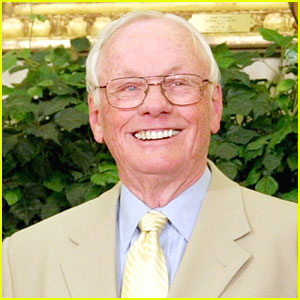First man on moon Neil Armstrong dies at 82
Look tonight at the moon. And think of Neil Armstrong, reluctant hero, the quiet man whose footsteps still rest upon the moon and in history.
Armstrong was a pilot first and foremost, and with the dust flying, craters looming and fuel running low on July 20, 1969, he never wavered. As everyone else on Earth held their breath on that day, his heartbeat never changed as he and co-pilot Buzz Aldrin made the first piloted landing upon the moon.
“Tranquility Base here. The Eagle has landed” – Armstrong informed mission controllers at NASA’s Johnson Space Center, with the restrained aplomb that marked his life. Two and a half hours later with the words: “That’s one small step for (a) man. One giant leap for mankind,” he stepped upon the moon for the first time.
Neil Armstrong, who made the “giant leap for mankind” as the first human to set foot on the moon, died on Saturday. He was 82.
His family said in a statement that the cause was “complications resulting from cardiovascular procedures.” He had undergone heart bypass surgery this month in Cincinnati, near where he lived. His recovery had been going well, according to those who spoke with him after the surgery, and his death came as a surprise to many close to him, including his fellow Apollo astronauts. The family did not say where he died.
A quiet, private man, at heart an engineer and crack test pilot, Mr. Armstrong made history on July 20, 1969, as the commander of the Apollo 11 spacecraft on the mission that culminated the Soviet-American space race in the 1960′s. President John F. Kennedy had committed the nation “to achieving the goal, before the decade is out, of landing a man on the Moon and returning him safely to Earth.” It was done with more than five months to spare.
On that day, Mr. Armstrong and his co-pilot, Col. Edwin E. Aldrin Jr., known as Buzz, steered their lunar landing craft, Eagle, to a level, rock-strewn plain near the southwestern shore of the Sea of Tranquillity. It was touch and go the last minute or two, with computer alarms sounding and fuel running low. But they made it.
“Houston, Tranquillity Base here” – Mr. Armstrong radioed to mission control. “The Eagle has landed.”
“Roger, Tranquillity” – mission control replied. “We copy you on the ground. You’ve got a bunch of guys about to turn blue. We’re breathing again. Thanks a lot.”
Neil Alden Armstrong was 38 years old at the time and even though he had fulfilled one of mankind’s age-old quests that placed him at the pinnacle of human achievement, he did not revel in his accomplishment. He even seemed frustrated by the acclaim it brought.
“I guess we all like to be recognized not for one piece of fireworks but for the ledger of our daily work” – Armstrong said in an interview on CBS’s “60 Minutes” program in 2005.
He once was asked how he felt knowing his footprints would likely stay on the moon’s surface for thousands of years. “I kind of hope that somebody goes up there one of these days and cleans them up” – he said.
James Hansen, author of “First Man: The Life of Neil A. Armstrong,” told CBS – “All of the attention that … the public put on stepping down that ladder onto the surface itself, Neil never could really understand why there was so much focus on that.”
The Apollo 11 moon mission turned out to be Armstrong’s last space flight. The next year he was appointed to a desk job, being named NASA’s deputy associate administrator for aeronautics in the office of advanced research and technology.
Armstrong’s post-NASA life was a very private one. He took no major role in ceremonies marking the 25th anniversary of the moon landing. “He’s a recluse’s recluse” – said Dave Garrett, a former NASA spokesman.
Hansen said stories of Armstrong dreaming of space exploration as a boy were apocryphal, although he was long dedicated to flight. “His life was about flying. His life was about piloting” – Hansen said.
